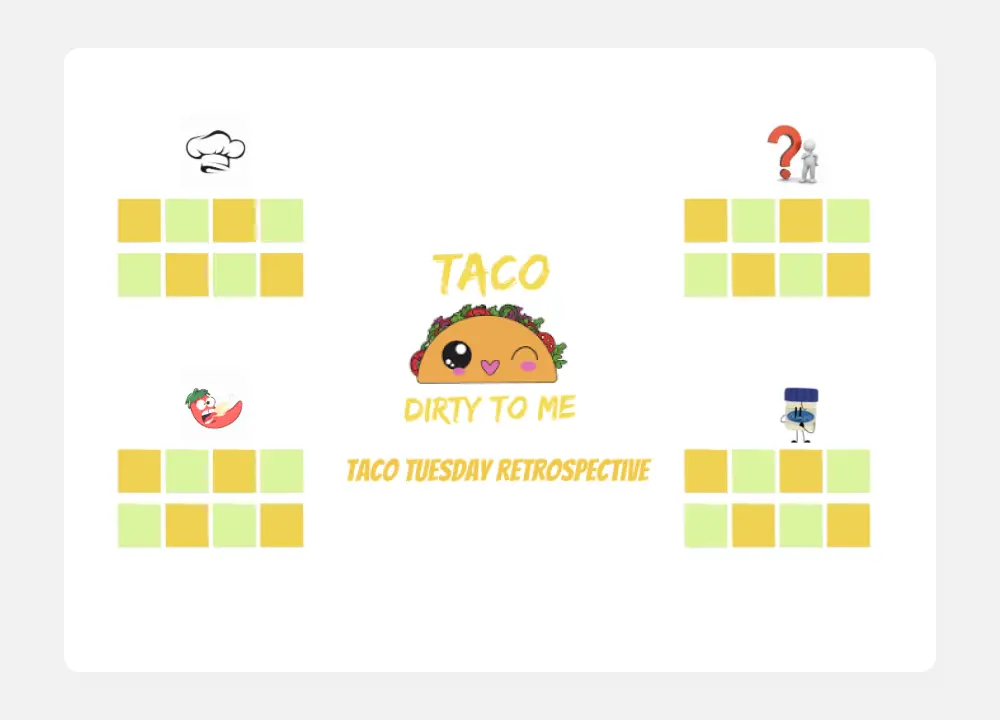Dog Meme Retro
How to use this template
Step 1: Prepare the Team - Pre-retro
Ensure the team involved in the retrospective understands the outcome behind the ceremony. Articulate this well in the calendar invite, encouraging people to come prepared to the session with their thoughts on how things have gone in the team recently. Remind people that
Step 2: Break the ice - 5mins
Set the expectation that this session will be engaging, immersive and participate by inviting the team to participate in the icebreaker related to the retro theme. This could be anything from building characters with post-it notes, assembling tacos or simply answering a random question
Step 3: Set the stage.
Remind participants of the purpose behind the retrospective. Norm Kerths Retro prime directive built into the template is a great way to reinforce the focus on unconditional positive regard. This helps create an environment of psychological safety and a bias towards continuous improvement & action.
It should be noted that not all of the prompts / questions presented MUST be completed within the timebox for the retrospective. A good discussion on one or two prompts that result in tangible actions is better than all of them being discussed, without actions being identified.
Step 4: Generate insights - Silent reflection
The template has built in a number of question prompts or options the team may use to provoke discussion around how the team can improve. The facilitator may choose the first topic, or empower the team to choose. From there, suggest that the person who chose first nominates the next prompt.
With the prompt chosen, set a timer for 3 minutes and encourage silent reflection by requesting the team to add their thoughts onto the post-it notes related to the prompt. This will enable quieter voices to share their insight and can promote psychological safety
Step 5: Generate insights - Discussion
When the timer is up, ask the team if there insights written down that they don't understand. Invite discussion on any themes or trends that may be observed. Ensure to invite quieter voices to share their insight aloud if they wish to do so.
When the team are happy to proceed, proceed to stage 6, dot voting.
Step 6: Dot vote
After allowing time for individual, silent reflection. Encourage the team to downselect to the item that most needs an action or experiment against. Do so using shapes within Miro or for bonus engagement points, encourage the team to choose random images from Google related to the theme of the retro. Dot voting with tiny tacos or pirates is more fun than just circles!
Step 7: A little less conversation, a little more action
After each question and dot vote, encourage 1 or 2 actions to be identified that the team should try in their next iteration. A retrospective that doesn't produce actionable experiments won't have much value.
When the team has between 3 and 5 small experiments to try next, you can close out the retro
Step 8: Retro your retro
With actions captured, ask the team to vote with a fist of five how they felt the retospective went. The 'Rate your retro' section at the bottom of the template includes the detail as to how the team should do this
Step 9: The next retro
Crystallize in the teams mind when the next retro is & empower your team to decide what the theme for the next retrospective should be. There are so many options for these out there these days, you can even create one together.
Categories
Similar templates



